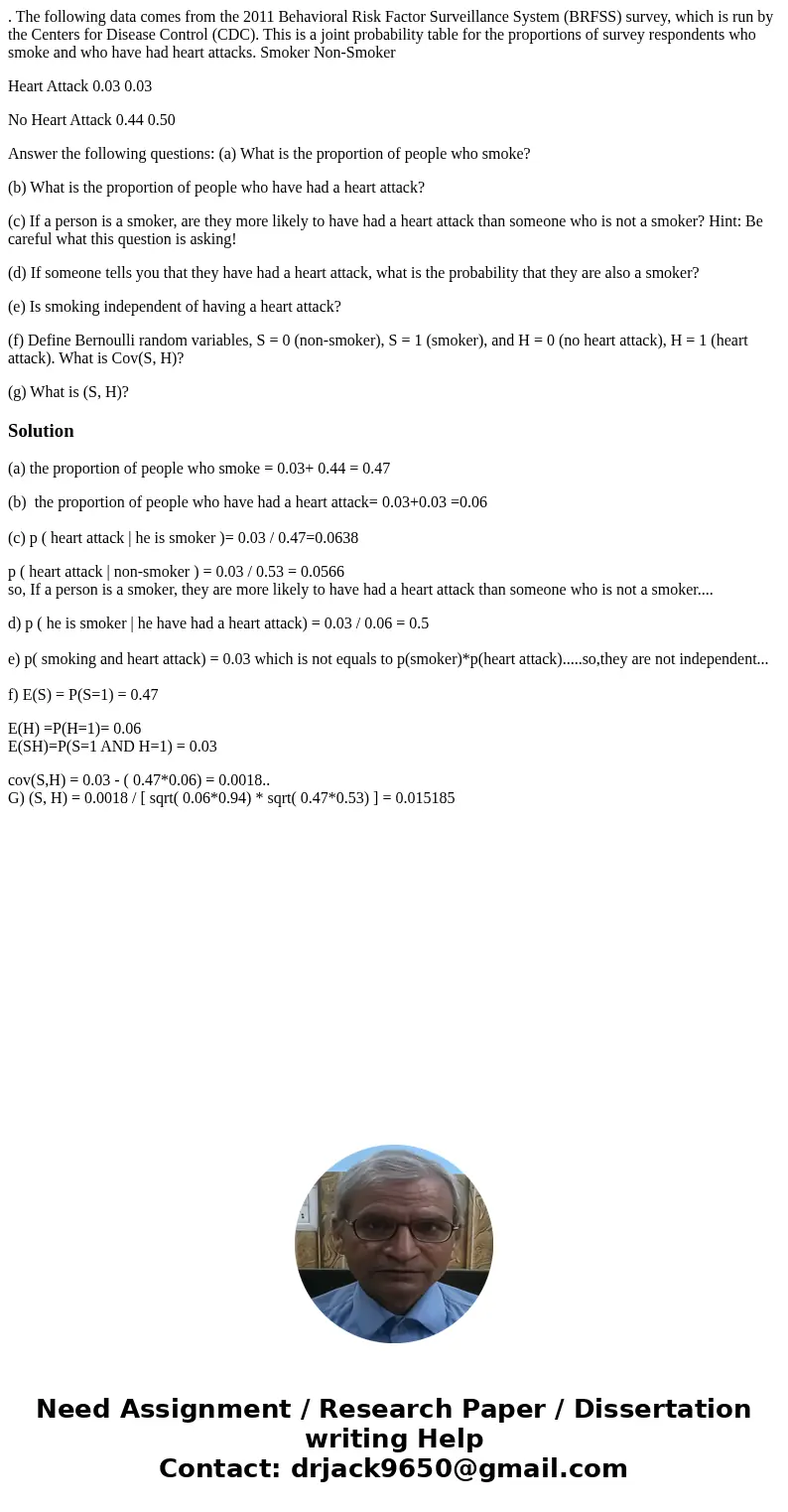The following data comes from the 2011 Behavioral Risk Fact
. The following data comes from the 2011 Behavioral Risk Factor Surveillance System (BRFSS) survey, which is run by the Centers for Disease Control (CDC). This is a joint probability table for the proportions of survey respondents who smoke and who have had heart attacks. Smoker Non-Smoker
Heart Attack 0.03 0.03
No Heart Attack 0.44 0.50
Answer the following questions: (a) What is the proportion of people who smoke?
(b) What is the proportion of people who have had a heart attack?
(c) If a person is a smoker, are they more likely to have had a heart attack than someone who is not a smoker? Hint: Be careful what this question is asking!
(d) If someone tells you that they have had a heart attack, what is the probability that they are also a smoker?
(e) Is smoking independent of having a heart attack?
(f) Define Bernoulli random variables, S = 0 (non-smoker), S = 1 (smoker), and H = 0 (no heart attack), H = 1 (heart attack). What is Cov(S, H)?
(g) What is (S, H)?
Solution
(a) the proportion of people who smoke = 0.03+ 0.44 = 0.47
(b) the proportion of people who have had a heart attack= 0.03+0.03 =0.06
(c) p ( heart attack | he is smoker )= 0.03 / 0.47=0.0638
p ( heart attack | non-smoker ) = 0.03 / 0.53 = 0.0566
so, If a person is a smoker, they are more likely to have had a heart attack than someone who is not a smoker....
d) p ( he is smoker | he have had a heart attack) = 0.03 / 0.06 = 0.5
e) p( smoking and heart attack) = 0.03 which is not equals to p(smoker)*p(heart attack).....so,they are not independent...
f) E(S) = P(S=1) = 0.47
E(H) =P(H=1)= 0.06
E(SH)=P(S=1 AND H=1) = 0.03
cov(S,H) = 0.03 - ( 0.47*0.06) = 0.0018..
G) (S, H) = 0.0018 / [ sqrt( 0.06*0.94) * sqrt( 0.47*0.53) ] = 0.015185

 Homework Sourse
Homework Sourse